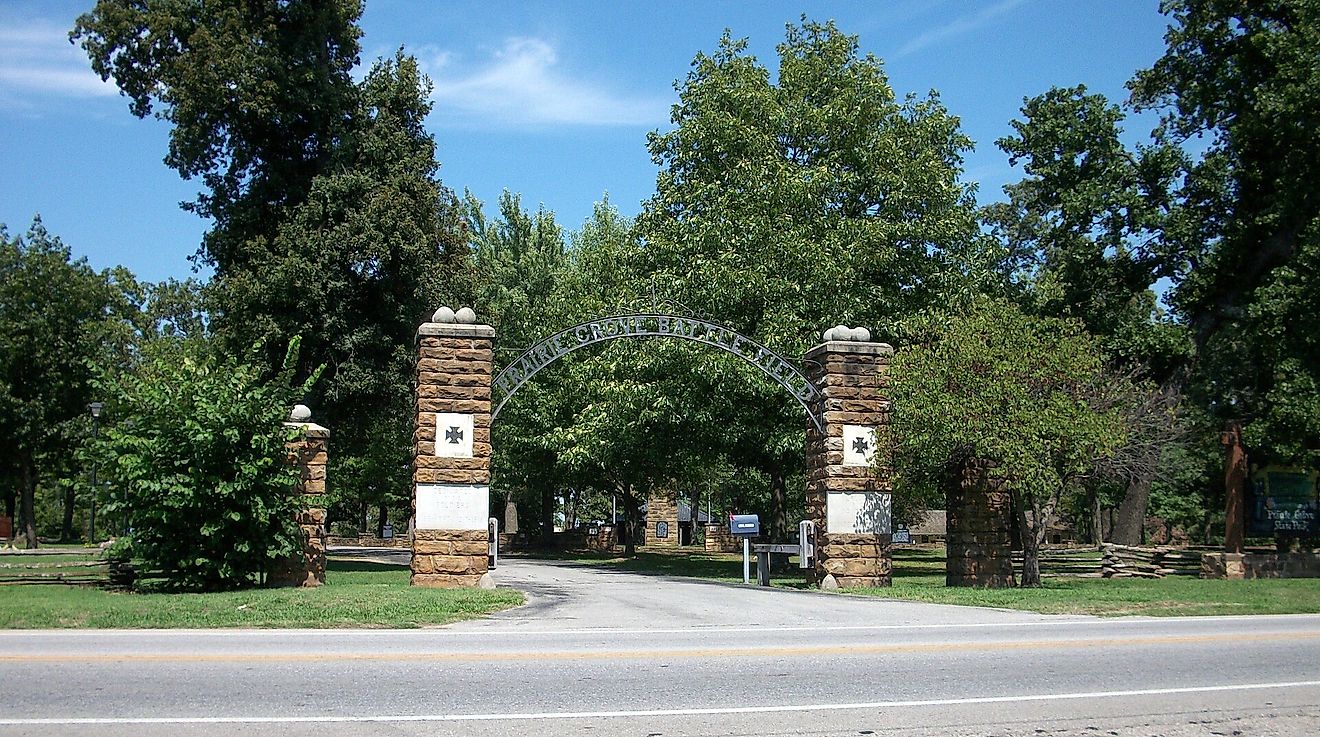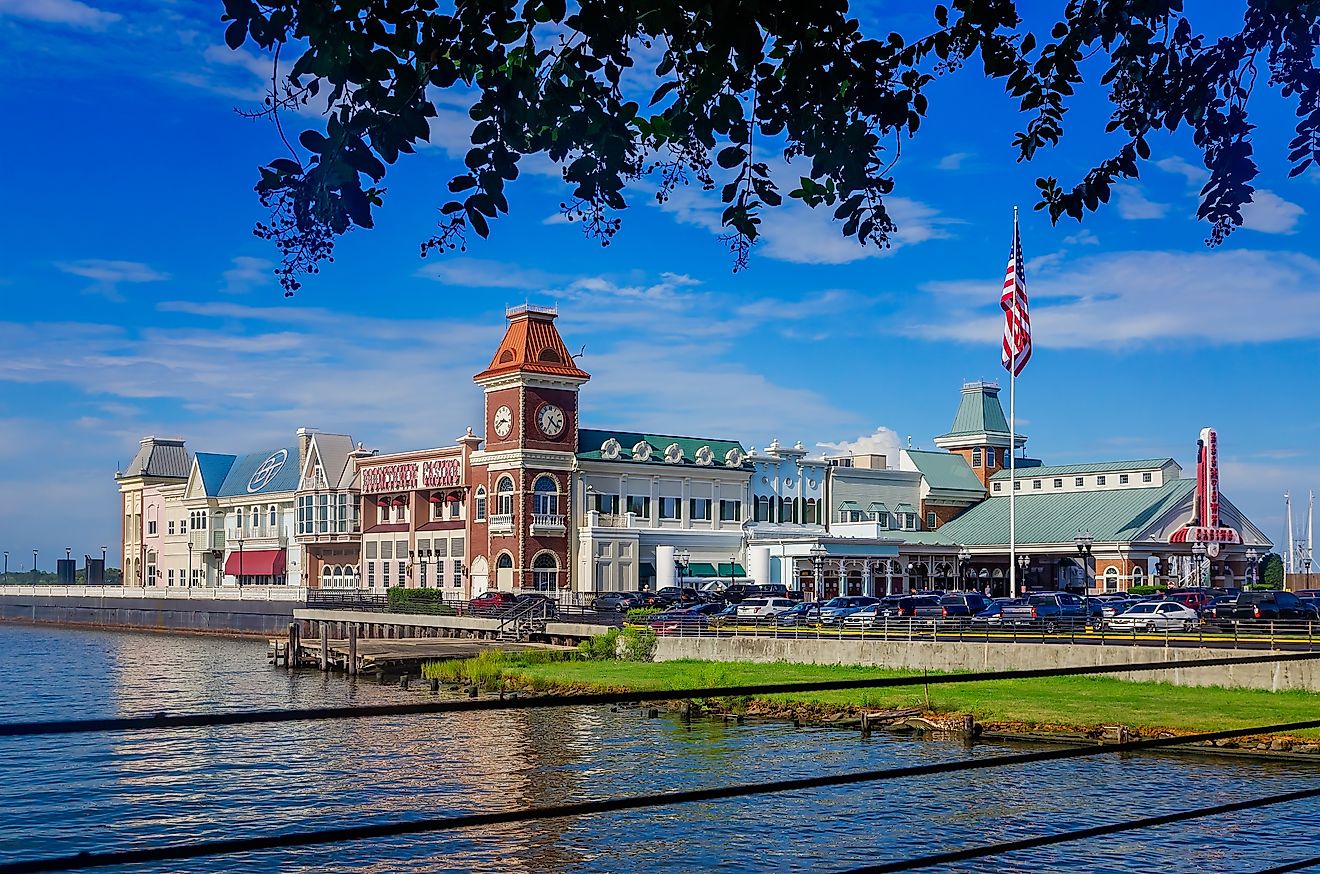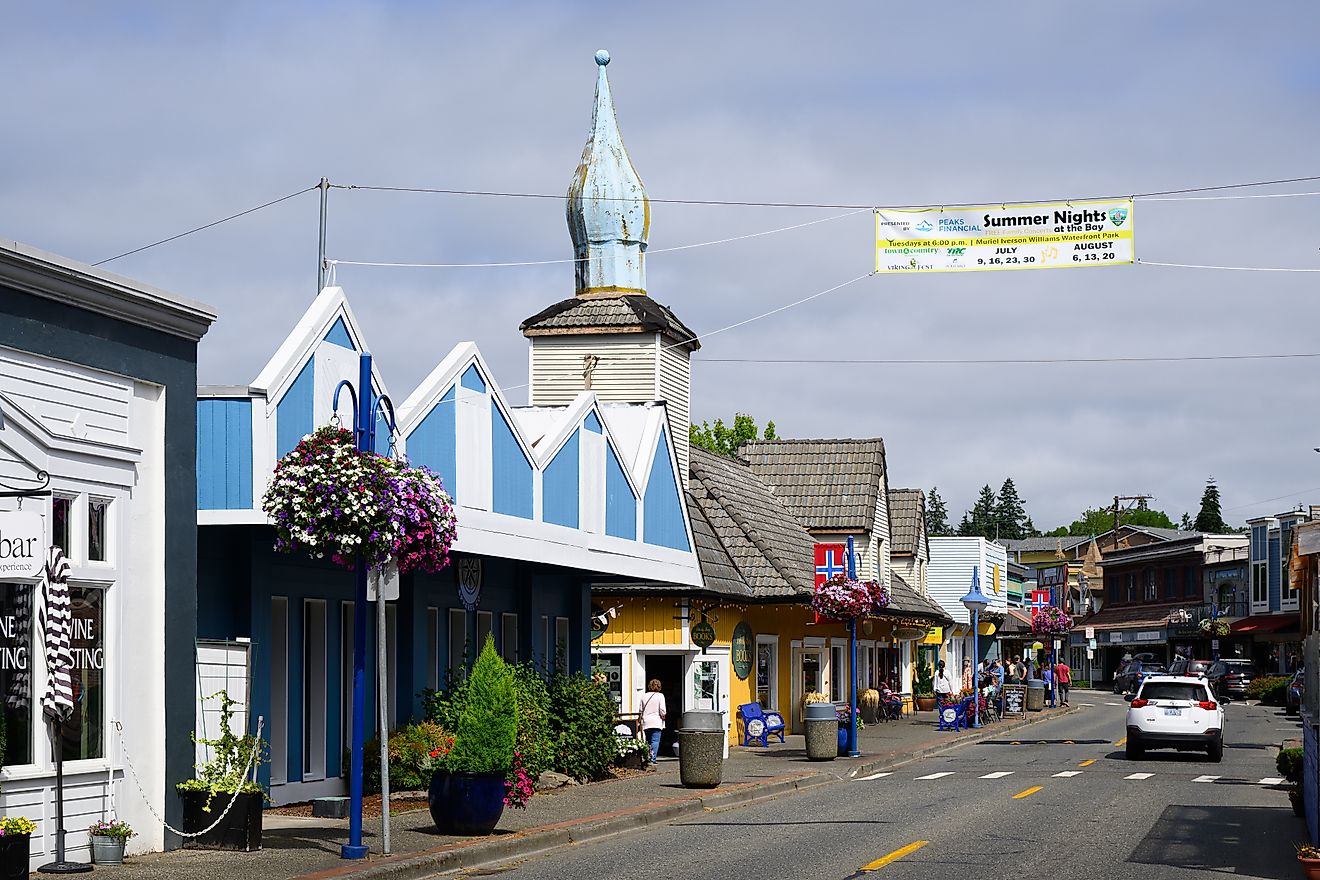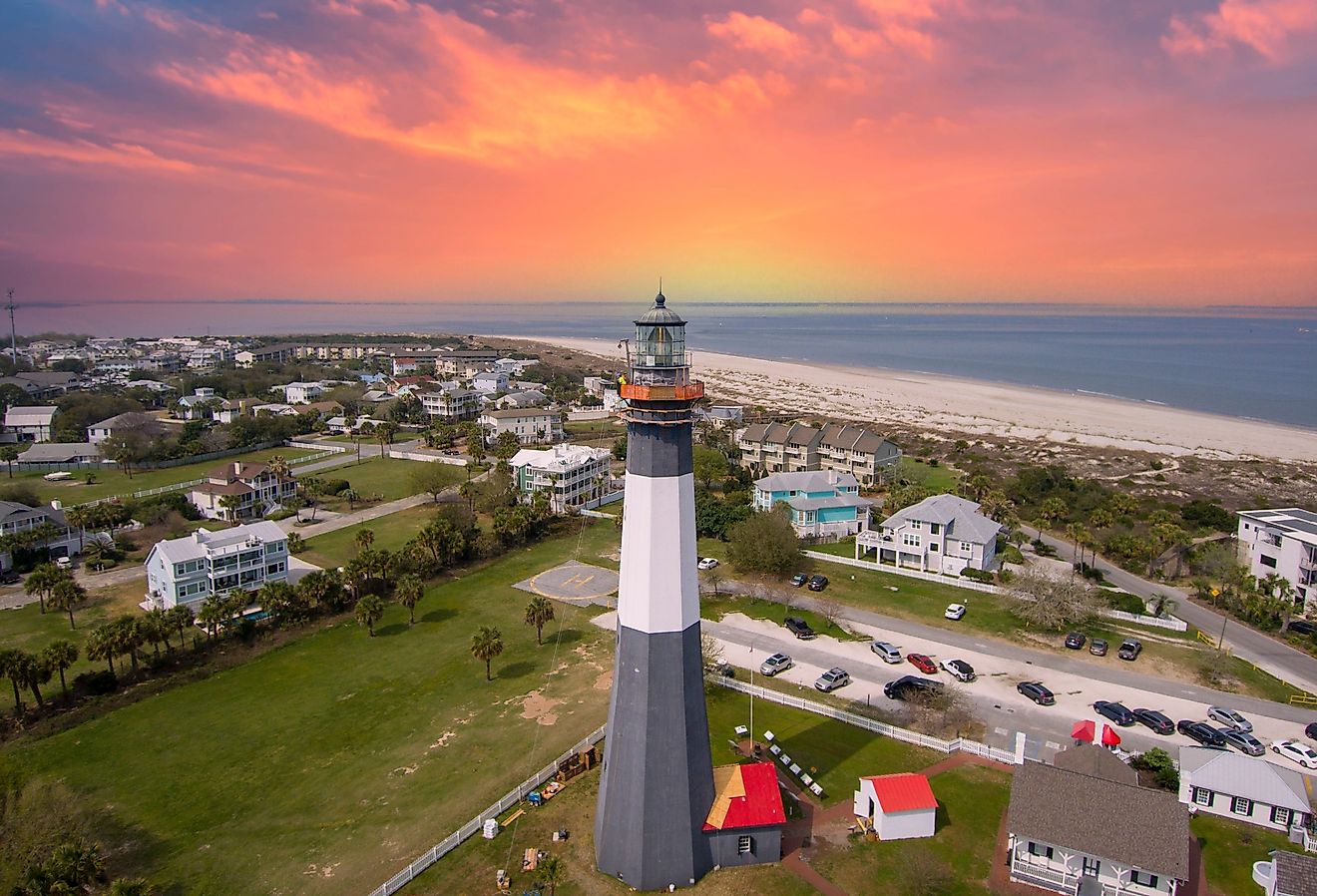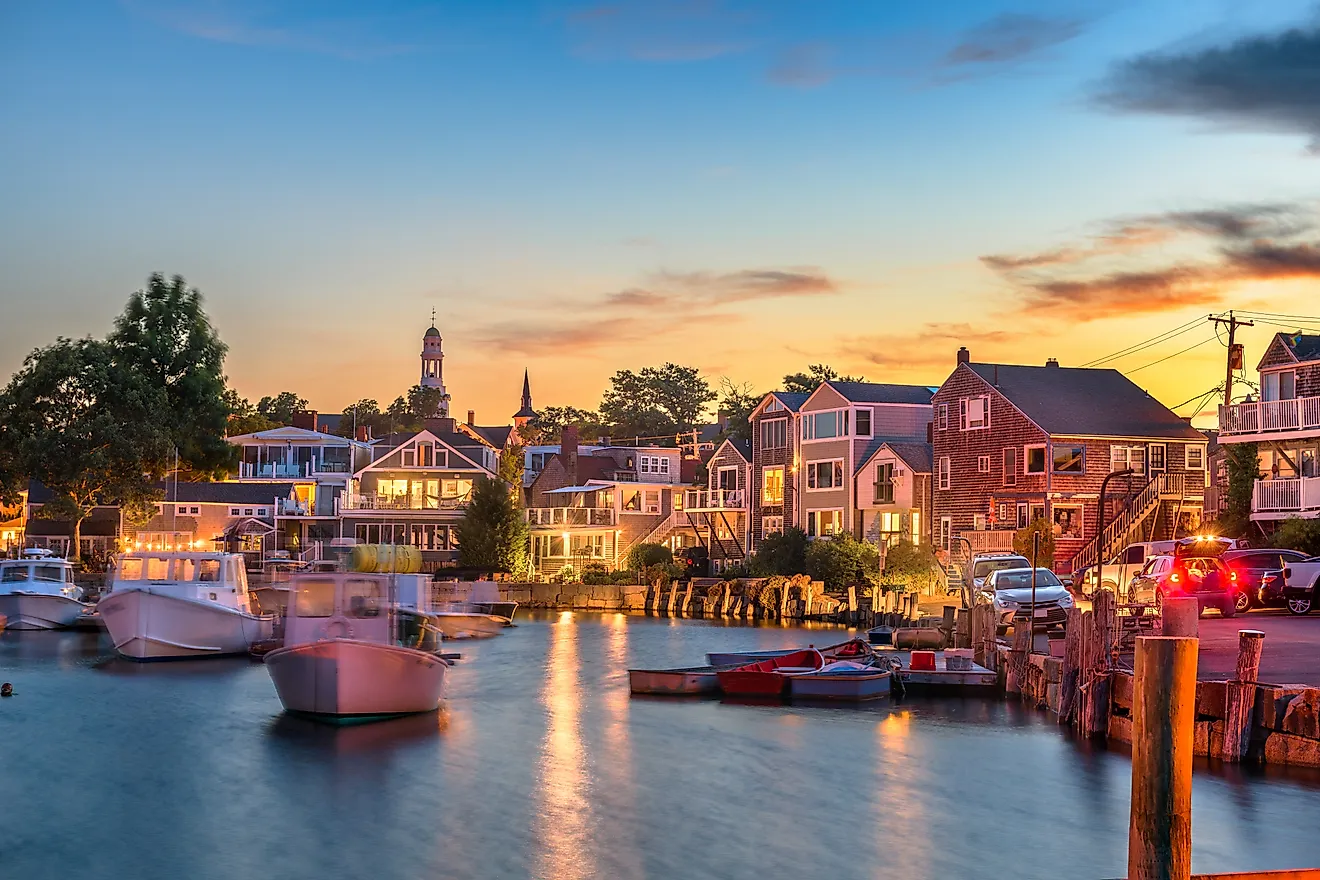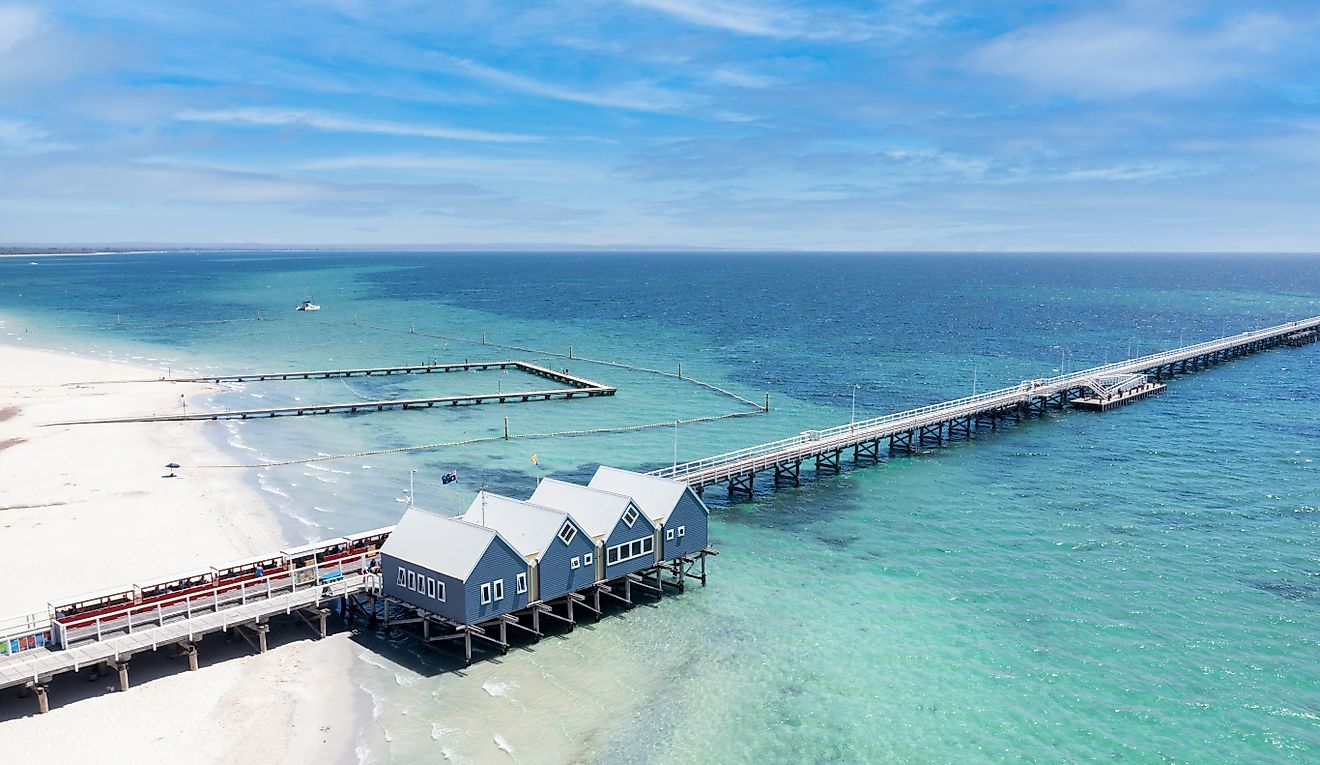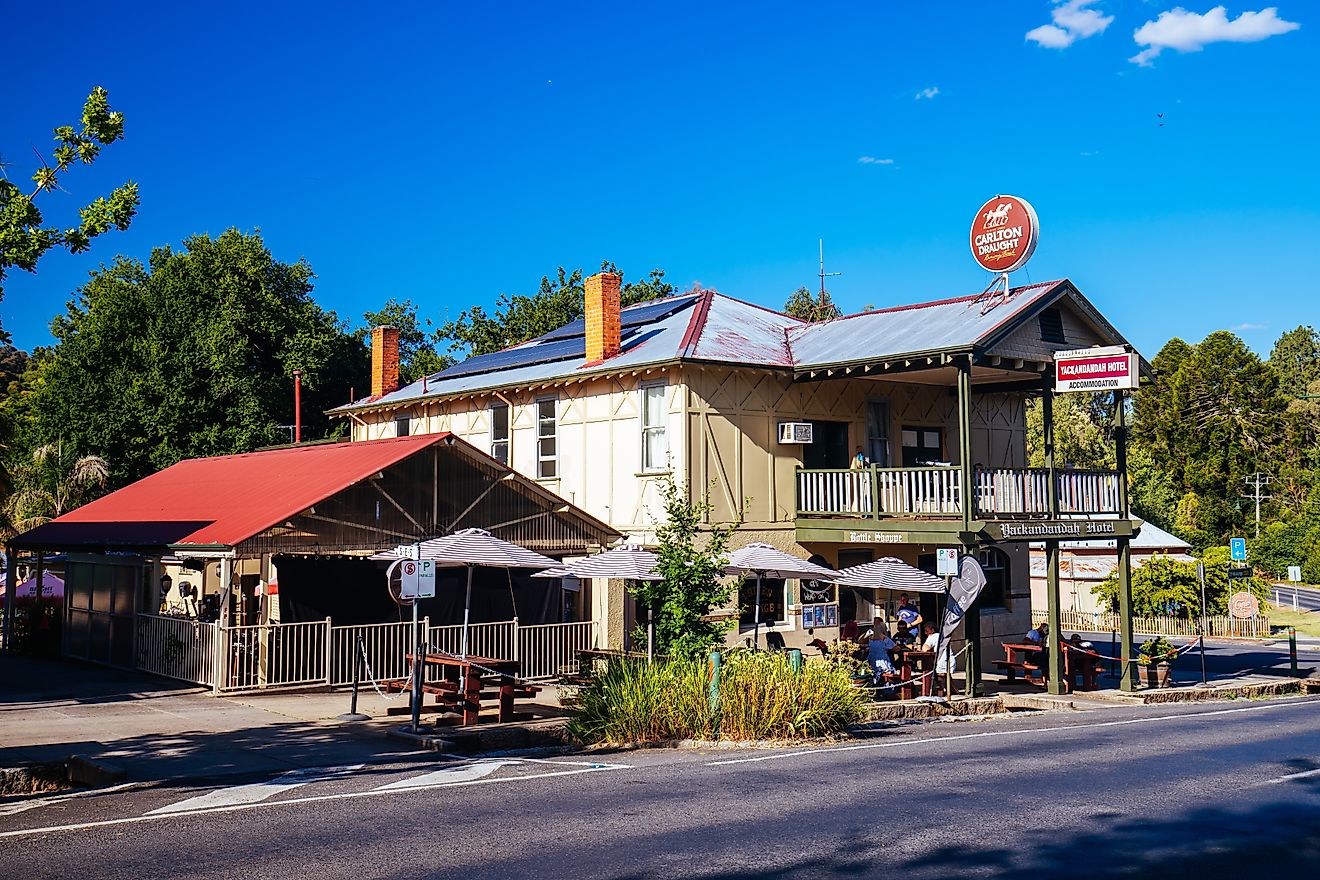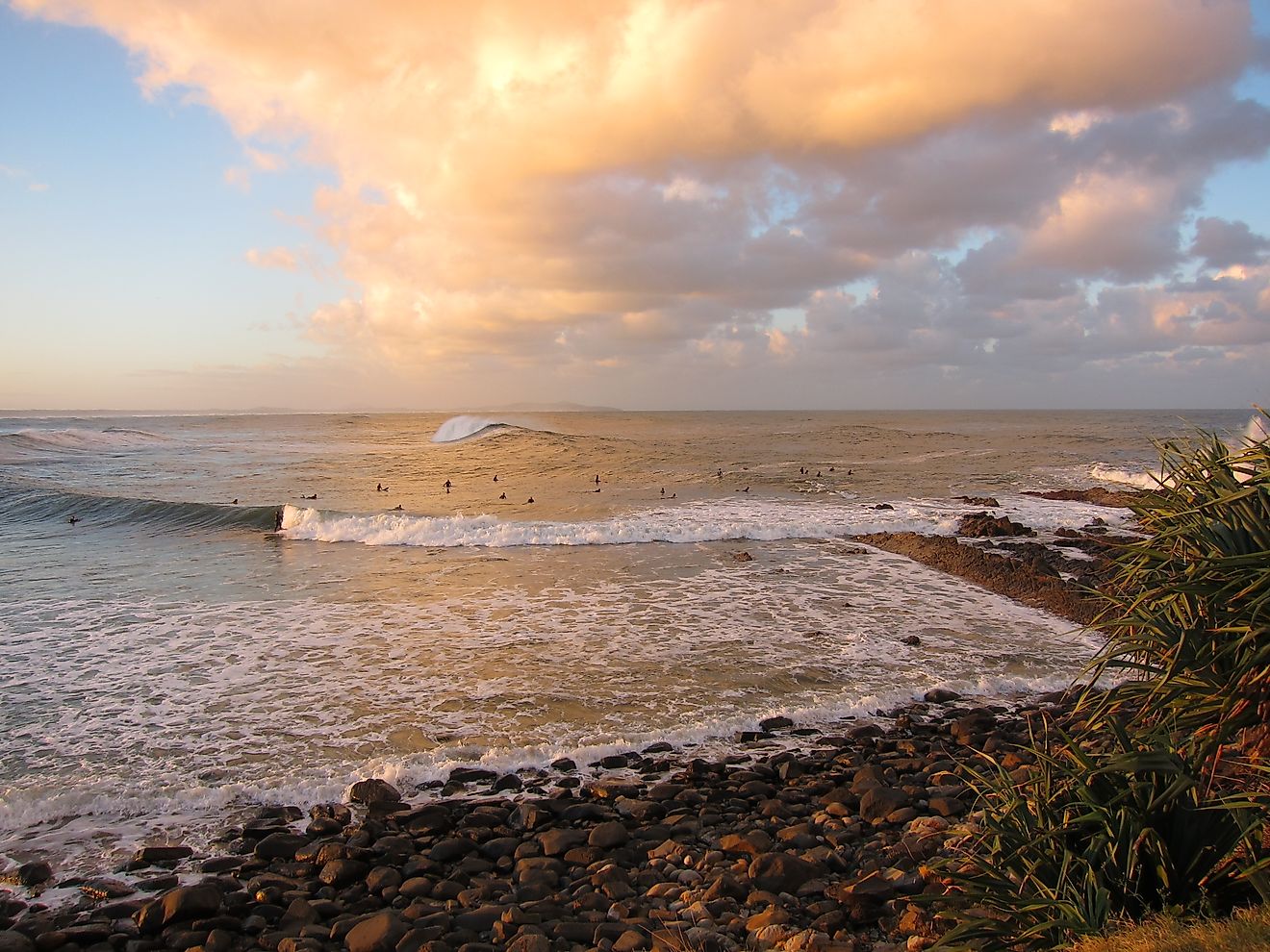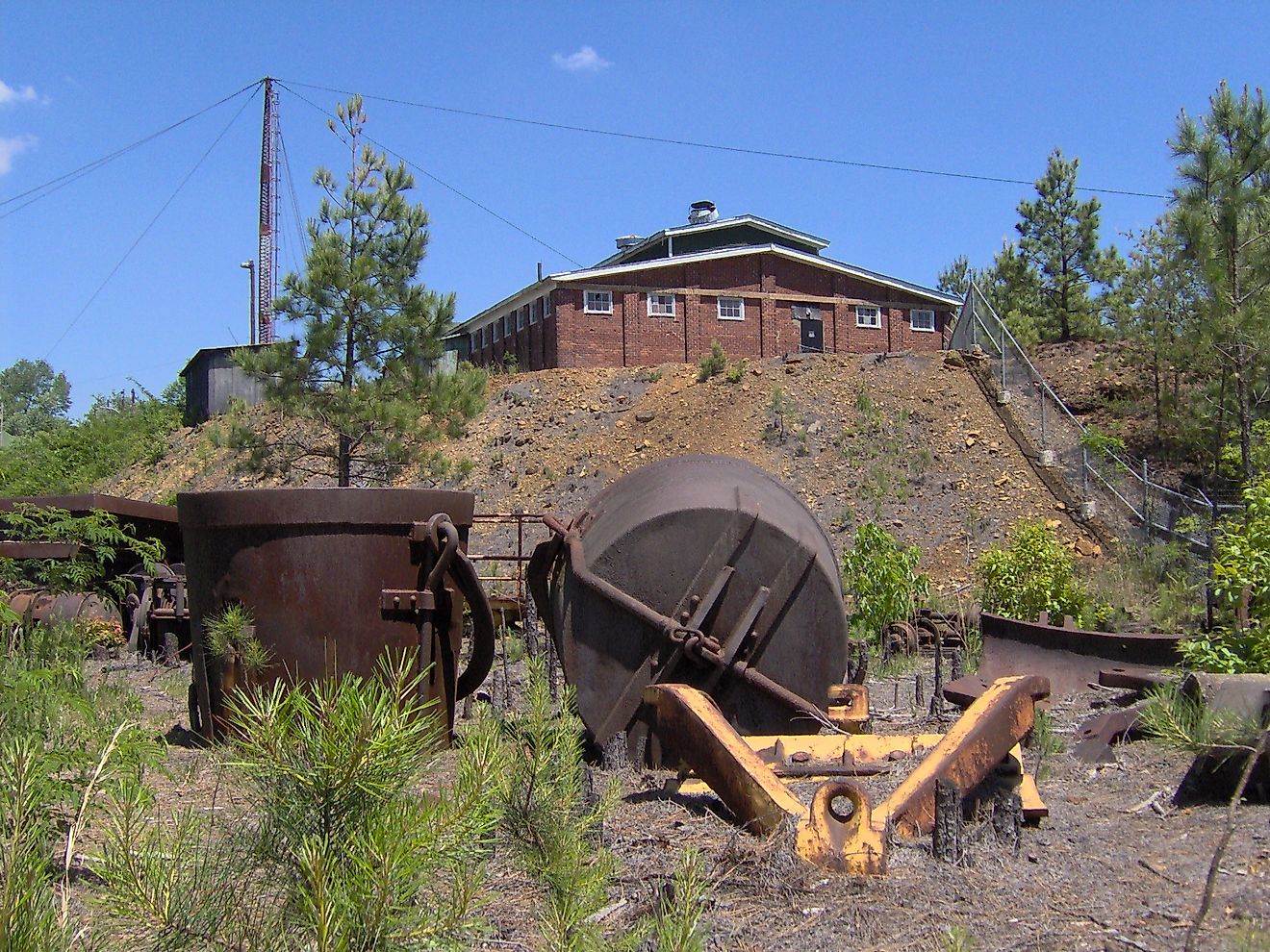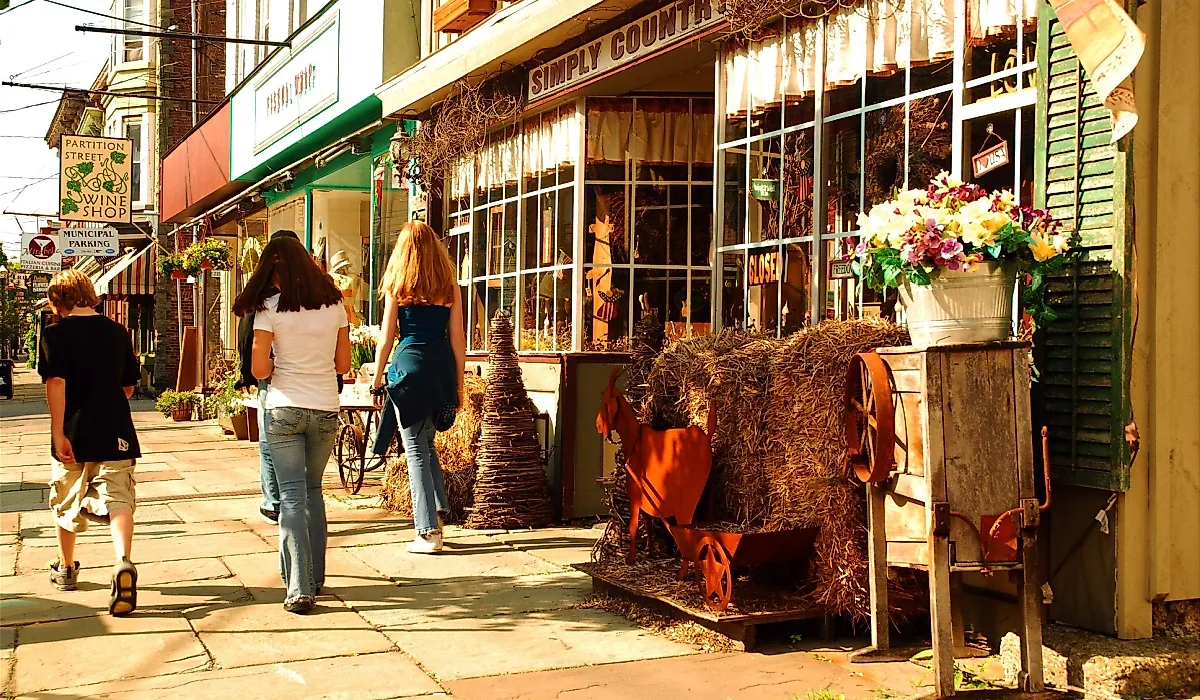
8 Of The Most Eccentric Towns In New York
Upstate New York is dotted with oddball towns. One turns every front porch into a séance parlor; another fires a Civil War cannon during Sunday brunch. A tiny village files its bookstore by celebrity top-10 lists, while a riverside hamlet launches kayaks down an old cannon ramp. These quirks line quiet roads and forgotten rail beds, not city streets.
This guide hits eight such places, each so fixated on one theme it rewrites local rules and breakfast menus. Expect a pet cemetery with handwritten headstones, six acres of stone towers built by one man, and a carousel spun by a shipyard winch. Here, weird isn’t a gimmick; it’s the law of the land!
Woodstock
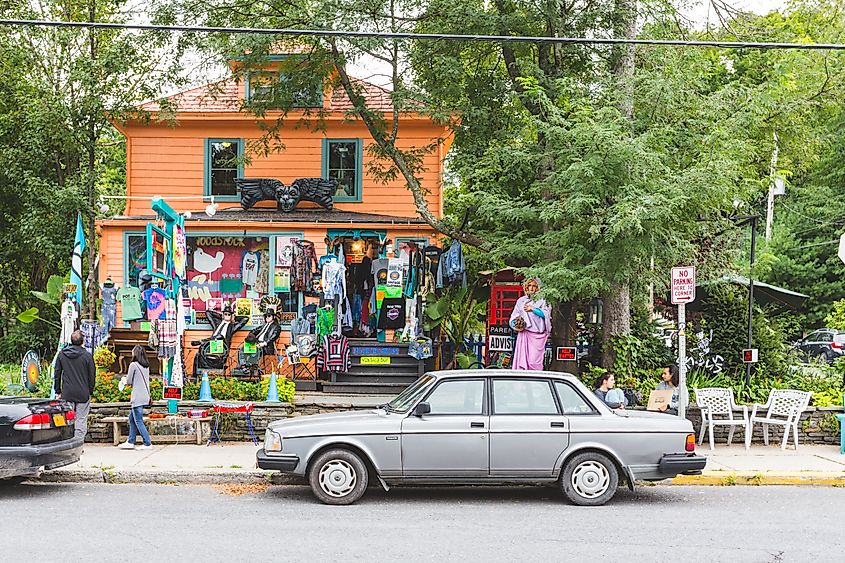
A white dove perches on a guitar at the entrance to Woodstock, carved into a roadside monument that marks the town’s mythic identity. The 1969 music festival didn’t happen here, but the name stuck, and so did the counterculture. Residents once voted to ban gas stations. The local police station has a rainbow flag out front. At night, the sound of hand drums carries from the Village Green, where unofficial drum circles have gathered for decades. What defines Woodstock isn’t nostalgia, it’s the long-standing collision of art, politics, and rural life, still unresolved.
Tinker Street is the main artery, where you’ll find Oriole 9, a brunch spot known for turmeric lattes and smoked salmon hash. Down the road, the Woodstock Artists Association & Museum shows early 20th-century American art and maintains ties to the Byrdcliffe Colony, founded in 1902. For groceries, Sunflower Natural Foods Market stocks bulk grains and tinctures in apothecary jars. The town’s walking path, the Comeau Trail, runs through protected land behind the town offices, no signage, just a worn dirt loop used daily. Live music happens most nights at the Colony, a former vaudeville theater turned bar and performance space. The town’s eccentricity is sustained by practice, not performance.
Lily Dale
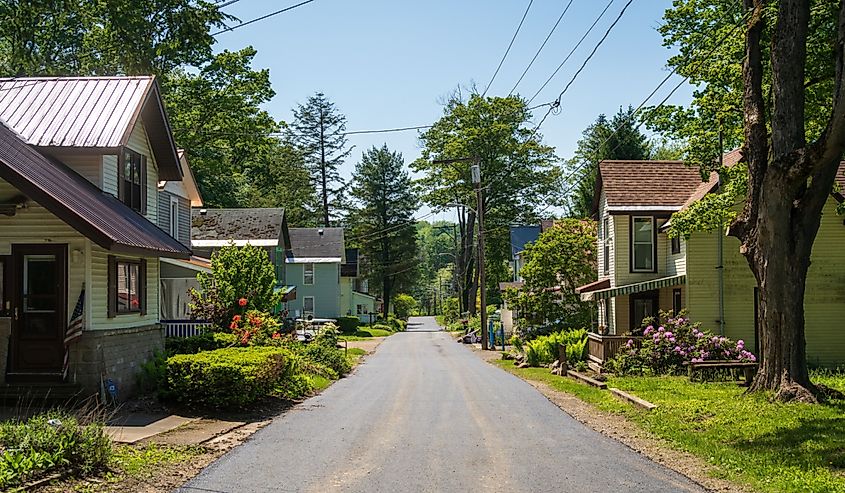
A gate with the word “Lily Dale” in wrought iron marks the threshold to a place where nearly every resident claims to speak with the dead. Founded in 1879 as a Spiritualist community, Lily Dale operates as a private hamlet with its own rules, calendar, and belief system. Mediums here must pass a series of tests to practice, and visitors sign waivers upon entry. The town’s archives include seances logged by date and voice, some going back more than a century. Street names like “Inspiration St.” and “Faith St.” aren’t symbolic, they reflect a mapped theology.
The Lily Dale Assembly hosts daily public demonstrations of mediumship at the Forest Temple, an open-air auditorium surrounded by old-growth pines. The Marion H. Skidmore Library contains one of the largest collections of Spiritualist texts in the country, including handwritten transcriptions of trance lectures. Next door, the Lily Dale Museum is housed in a former schoolhouse and displays 19th-century spirit photography and ectoplasm reports. At the edge of town, the Leolyn Woods Pet Cemetery holds over 1,000 animal graves, many with messages addressed directly to their spirits.
Cooperstown
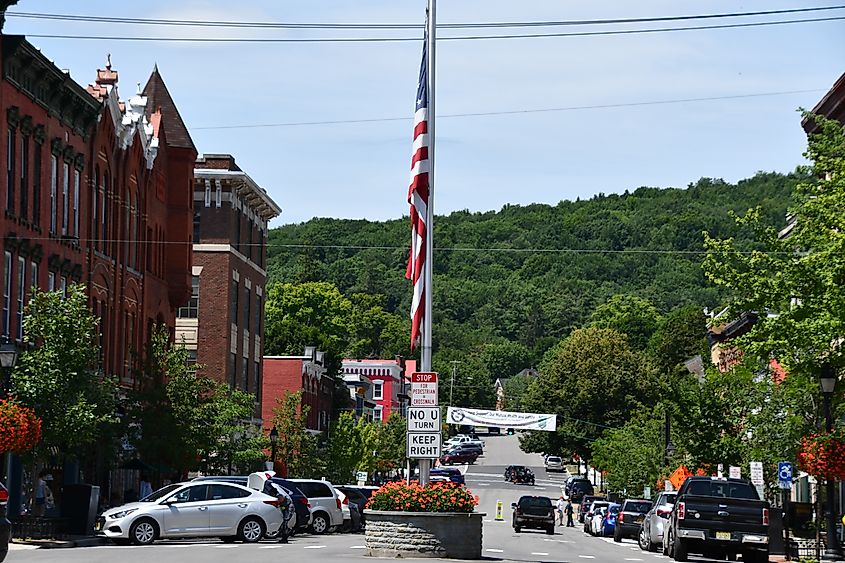
Cooperstown was built on a myth. Abner Doubleday never invented baseball, but a 1907 commission said he did, and the town committed. Now there’s a bronze statue of him in the park and an entire economy tied to the false origin story. The real founder was Judge William Cooper, father of novelist James Fenimore Cooper, who used the town’s lake, Otsego, as the setting for The Deerslayer. Today, Cooperstown sustains two identities: a baseball shrine and a preserved 19th-century village, both curated with equal intensity.
The National Baseball Hall of Fame anchors Main Street, where players’ plaques share space with exhibits on stadium architecture and baseball cards. Around the corner, Schneider’s Bakery sells raisin-filled cookies and molasses crinkles made from recipes older than the Hall itself. Fenimore Art Museum, overlooking the lake, houses a permanent collection of American folk art and Native American artifacts, including beadwork from the Haudenosaunee Confederacy. Glimmerglass State Park, eight miles north, offers access to Hyde Hall, a limestone mansion finished in 1834 and reportedly haunted.
Cold Spring
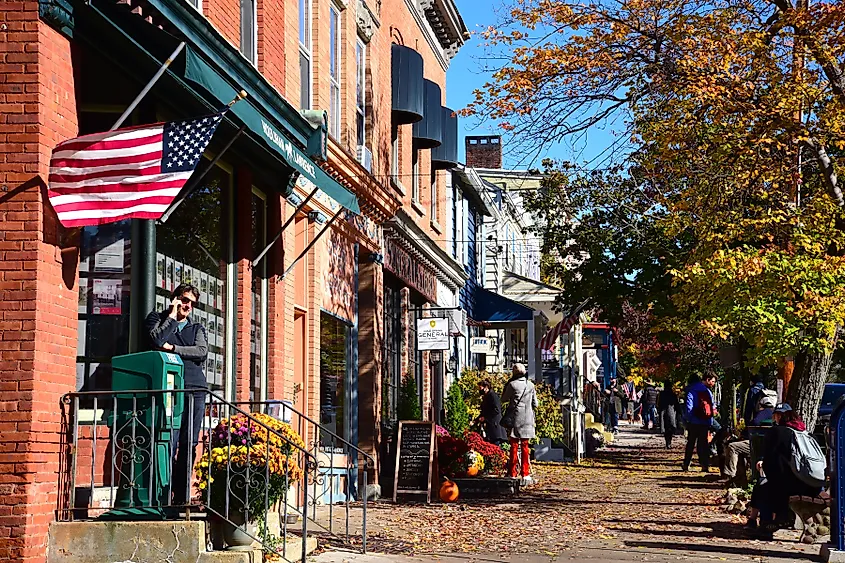
A working 19th-century cannon faces the Hudson River at the foot of Cold Spring’s Main Street. It’s not decorative. It’s fired during village ceremonies. The town developed around West Point Foundry, which supplied the Union Army with Parrott rifles during the Civil War. That industrial past still shapes the landscape, brick ruins, iron fragments, and foundry molds are embedded in the woods behind the train station. Cold Spring’s eccentricity isn’t aesthetic; it’s structural. The town’s layout, street names, and property lines trace the logic of a long-defunct weapons plant.
Main Street curves slightly uphill and ends at the water. Along it, Split Rock Books sells small-press fiction and handmade zines out of a former tailor’s shop. At Foundry Dock Park, kayakers enter the Hudson through a channel once used to launch artillery. The West Point Foundry Preserve, accessible by foot from downtown, contains interpretive trails that pass blast furnaces and casting pits, with QR codes linking to 3D reconstructions. For food, Le Bouchon serves steak frites in a converted house with a back patio enclosed by a stone wall built before the Civil War.
Hudson
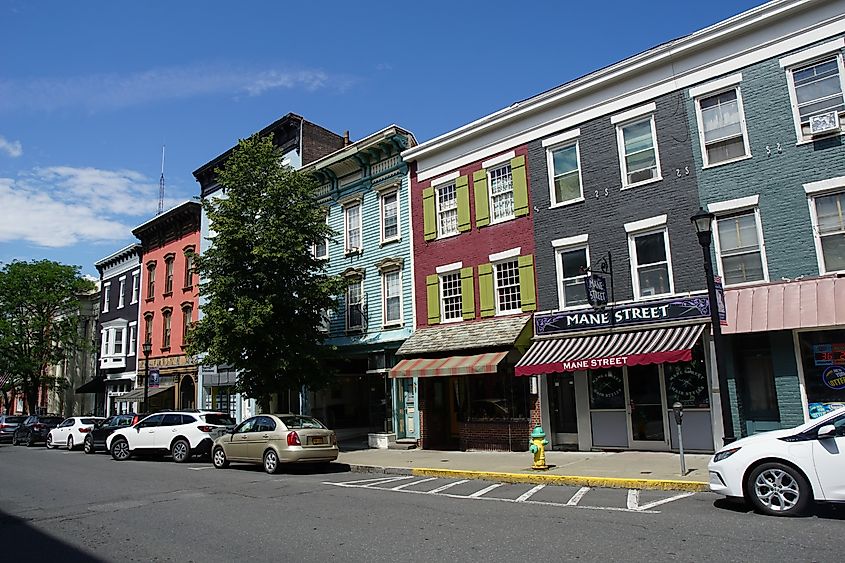
Hudson was founded by whalers from Nantucket who sailed upriver in the 1780s to avoid pirates. It later became a center for ironworks, then furniture, then, briefly, a red-light district. By the 1990s, antique dealers had filled the abandoned storefronts on Warren Street, drawing artists, preservationists, and eventually investors. The result is a town that’s both economically speculative and historically intact. Greek Revival mansions stand beside boarded-up rowhouses. It’s not restored. It’s layered.
Warren Street still carries most of the traffic, pedestrian, financial, and otherwise. Moto Coffee/Machine sells espresso next to vintage motorcycles in a converted garage. Basilica Hudson, a reclaimed glue factory on the waterfront, hosts experimental noise festivals and solar-powered art installations. The Hudson Area Library operates out of the former armory and maintains an oral history project focused on public housing residents. For food, Lil' Deb's Oasis runs an open kitchen, rotating Caribbean and South American dishes under colored lights and with a staff of working artists. No single group defines Hudson, but each leaves visible marks.
Greenport
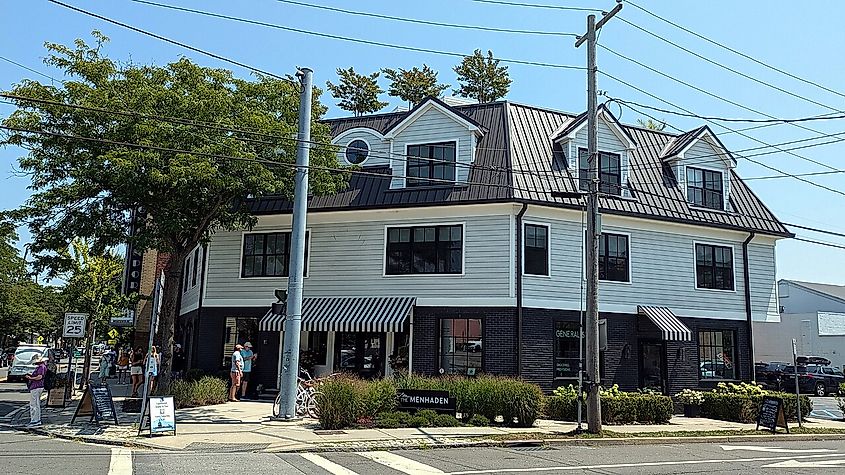
Greenport still operates its 1920s carousel for 50 cents a ride, powered by the same motor that once ran a whaling ship winch. The town sits at the edge of Long Island’s North Fork, once filled with shipyards, oyster beds, and speakeasies. Until the 1970s, the local jail was inside the railroad station. Commercial fishing licenses are passed down through families. In Greenport, maritime history isn’t re-created, it was never interrupted. That continuity gives the town its eccentricity: industrial infrastructure sits beside boutique wine bars, and both function year-round.
The East End Seaport Museum maintains a working periscope from a decommissioned submarine and offers seasonal trips to Bug Light, a lighthouse restored by volunteers. 1943 Pizza Bar serves thin slices baked in a wood oven set inside an old firehouse. Across the street, Di Angela Leather carries handmade belts and bags made in a shop behind the counter. At Mitchell Park, the boardwalk cuts directly through the marina, and the benches are placed in full view of boat repairs. Nothing is tucked away.
Narrowsburg
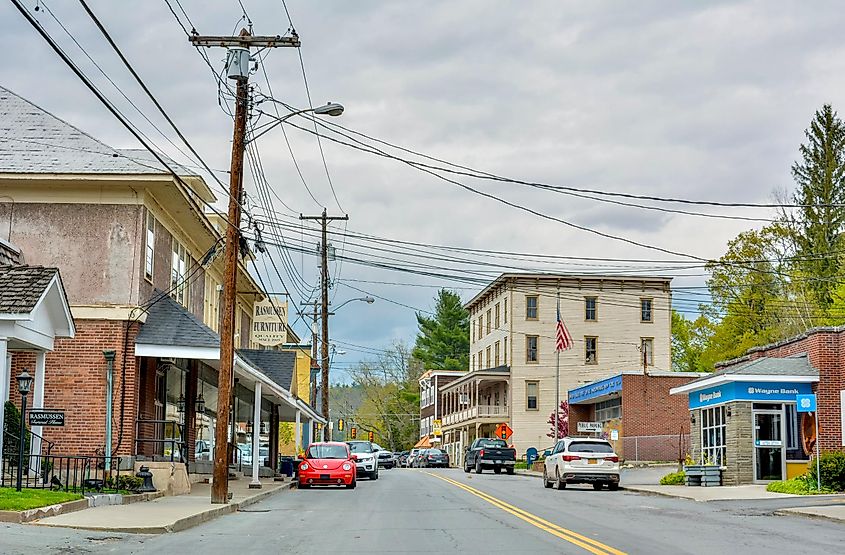
The Delaware River makes a sharp bend at Narrowsburg, carving a limestone ledge into the base of the town. From the overlook, bald eagles can be seen fishing below the bridge. The town once served as a logging outpost, then a rail hub, then a retreat for summer camps. Its current shape comes from a wave of early-2000s urban expats, many of whom arrived with art degrees and stayed to open businesses. The local newspaper is printed by hand on a vintage letterpress and edited out of a storefront. Narrowsburg’s eccentricity lies in its scale, dense, compressed, and curated by its own residents.
The Delaware Valley Arts Alliance operates two galleries and an upstairs performance space in the former Arlington Hotel. Across the street, One Grand Books sells only lists, each title in the store is part of a curated “top ten” chosen by an invited author or public figure. The Laundrette, located in a former coin-op, serves sourdough pizza and natural wine beside a riverside deck. On the edge of town, the Tusten Mountain Trail climbs to a lookout once used by fire rangers, passing foundations of a vanished Civilian Conservation Corps camp.
Saugerties
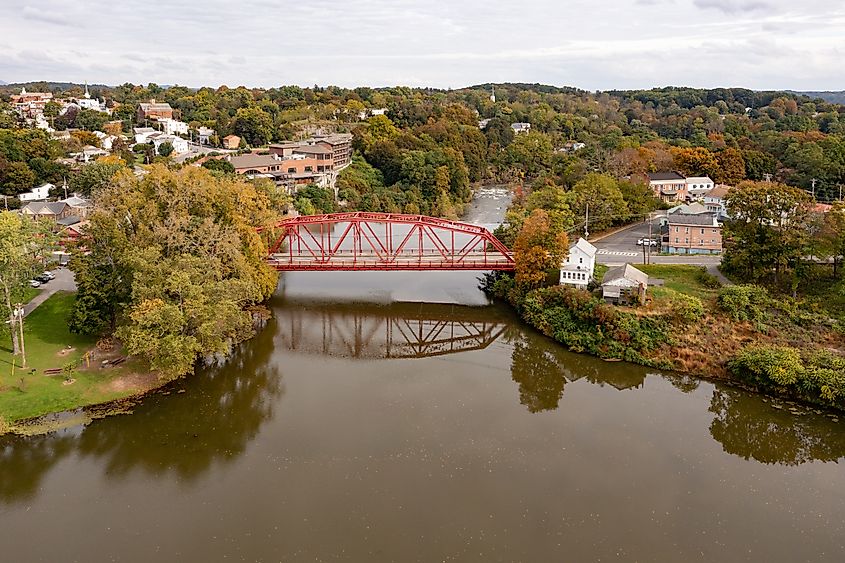
The Esopus Creek runs straight through downtown Saugerties, fast enough to have once powered mills, loud enough to drown out traffic. A paper company dam still cuts the water in half. In 1965, Bob Dylan rented a pink-painted house nearby and started recording with The Band in its basement. Locals called it Big Pink. The resulting album, The Basement Tapes, wasn't officially released for over a decade, but Saugerties never lost the association. The town became a magnet for musicians, antique dealers, and people who knew how to recognize rare vinyl by the sleeve.
The Saugerties Lighthouse, built in 1869, sits at the mouth of the creek and is accessible only by foot during low tide. It still functions as a Coast Guard navigational aid and a bed-and-breakfast. Opus 40, a six-acre environmental sculpture built by one man, Harvey Fite, over 37 years, includes terraces, tunnels, and a 9-ton monolith. For books and coffee, Inquiring Minds occupies the old post office and stocks anarchist theory beside children’s books.
Together, these eight hamlets prove that eccentricity is not a sideshow but a survival strategy. Logging ghosts, naval carousels, drum circles, and cannons share county maps because each community chose preservation over polish. Their economies rely on curiosity, their identities on stubborn local lore. In a state famed for its skyline, the most revealing stories unfold where river bends, mill ruins, and eccentric residents still rewrite the civic script daily.

